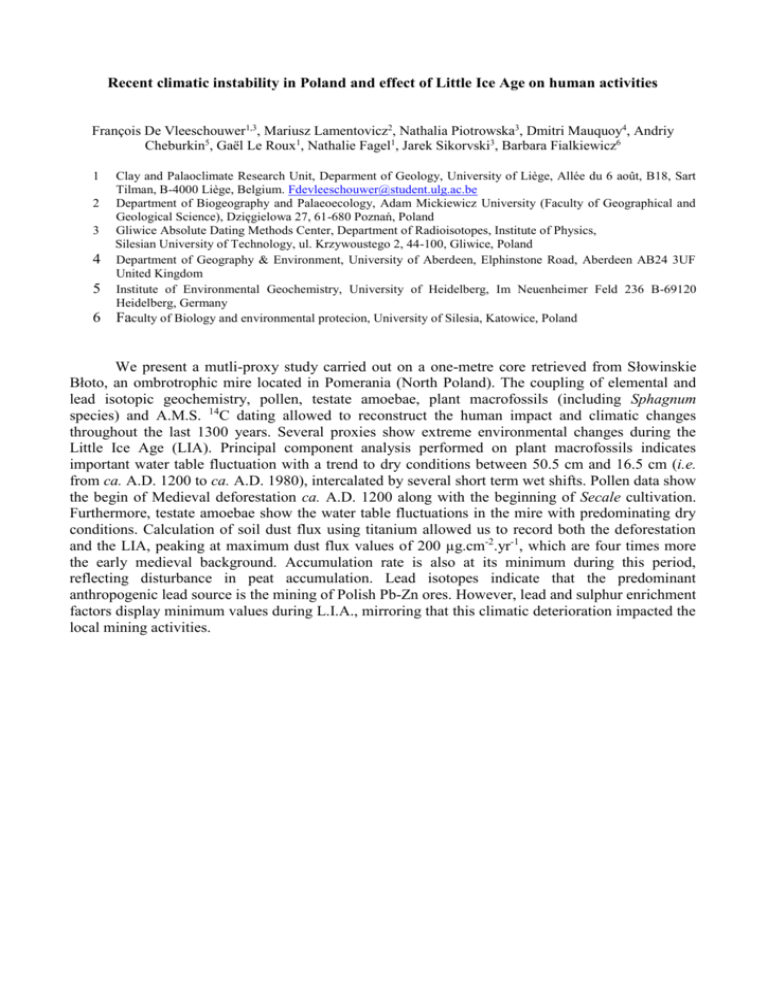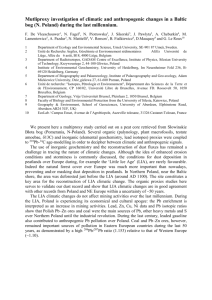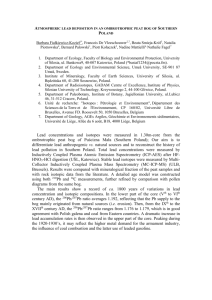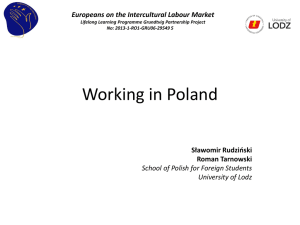Recent climatic instability in Poland and effect of Little Ice
advertisement

Recent climatic instability in Poland and effect of Little Ice Age on human activities François De Vleeschouwer1,3, Mariusz Lamentovicz2, Nathalia Piotrowska3, Dmitri Mauquoy4, Andriy Cheburkin5, Gaël Le Roux1, Nathalie Fagel1, Jarek Sikorvski3, Barbara Fialkiewicz6 1 2 3 4 5 6 Clay and Palaoclimate Research Unit, Deparment of Geology, University of Liège, Allée du 6 août, B18, Sart Tilman, B-4000 Liège, Belgium. Fdevleeschouwer@student.ulg.ac.be Department of Biogeography and Palaeoecology, Adam Mickiewicz University (Faculty of Geographical and Geological Science), Dzięgielowa 27, 61-680 Poznań, Poland Gliwice Absolute Dating Methods Center, Department of Radioisotopes, Institute of Physics, Silesian University of Technology, ul. Krzywoustego 2, 44-100, Gliwice, Poland Department of Geography & Environment, University of Aberdeen, Elphinstone Road, Aberdeen AB24 3UF United Kingdom Institute of Environmental Geochemistry, University of Heidelberg, Im Neuenheimer Feld 236 B-69120 Heidelberg, Germany Faculty of Biology and environmental protecion, University of Silesia, Katowice, Poland We present a mutli-proxy study carried out on a one-metre core retrieved from Słowinskie Błoto, an ombrotrophic mire located in Pomerania (North Poland). The coupling of elemental and lead isotopic geochemistry, pollen, testate amoebae, plant macrofossils (including Sphagnum species) and A.M.S. 14C dating allowed to reconstruct the human impact and climatic changes throughout the last 1300 years. Several proxies show extreme environmental changes during the Little Ice Age (LIA). Principal component analysis performed on plant macrofossils indicates important water table fluctuation with a trend to dry conditions between 50.5 cm and 16.5 cm (i.e. from ca. A.D. 1200 to ca. A.D. 1980), intercalated by several short term wet shifts. Pollen data show the begin of Medieval deforestation ca. A.D. 1200 along with the beginning of Secale cultivation. Furthermore, testate amoebae show the water table fluctuations in the mire with predominating dry conditions. Calculation of soil dust flux using titanium allowed us to record both the deforestation and the LIA, peaking at maximum dust flux values of 200 µg.cm-2.yr-1, which are four times more the early medieval background. Accumulation rate is also at its minimum during this period, reflecting disturbance in peat accumulation. Lead isotopes indicate that the predominant anthropogenic lead source is the mining of Polish Pb-Zn ores. However, lead and sulphur enrichment factors display minimum values during L.I.A., mirroring that this climatic deterioration impacted the local mining activities.











